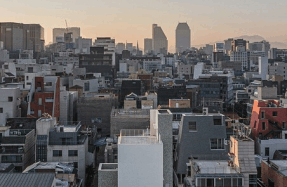THE BAUHAUS AND KOREAN ARCHITECTURE




The year 2019 marks the 100th anniversary of the Bauhaus, and various commemorative efforts are gaining traction across the globe. Korea’s modern architecture owes a lot to the school, but the craze for Bauhaus isn’t that high. This is because Korea’s relation with the Bauhaus is indirect. On the 12th of April, 1919, when the Bauhaus emerged as a result of the integration of Weimar Academy of Fine Art and Weimar Saxon Grand Ducal Art School, Korea was under Japanese colonial rule. At that time, Gyeongseong Engineering College – established in 1916, the only higher education in the country by 1940s – had just produced Korean graduates.
The Bauhaus’ performance mostly flowed through Japanese magazines. In the 1930s, Korean architects Park Kilyong and Yi Sang were partially quoting the Bauhaus but failed to grasp its essential meaning.
In 1933, when Bauhaus was forced to close under pressure exerted by the Nazis, meaning that direct exchanges with Korean architecture had become impossible. Nevertheless, its ideology survives and can be encountered in architecture produced in South and North Korea since the 1950s. This article covers the Bauhaus: its political ideology, its spread to East Asia and across the Korean Peninsula, and its legacy in the South.
Political Issues
During its establishment and development, the Bauhaus had been dogged by political issues. The school’s lifespan (its opening in 1919 and closing in 1933) is almost identical to that of the Weimar Republic (1918 – 1933), suggesting that the school was hardly free from political pressures. Since the Bauhaus began as a public school, financial support from the local government was essential for its management; however,
You’re reading a preview, subscribe to read more.
Start your free 30 days



